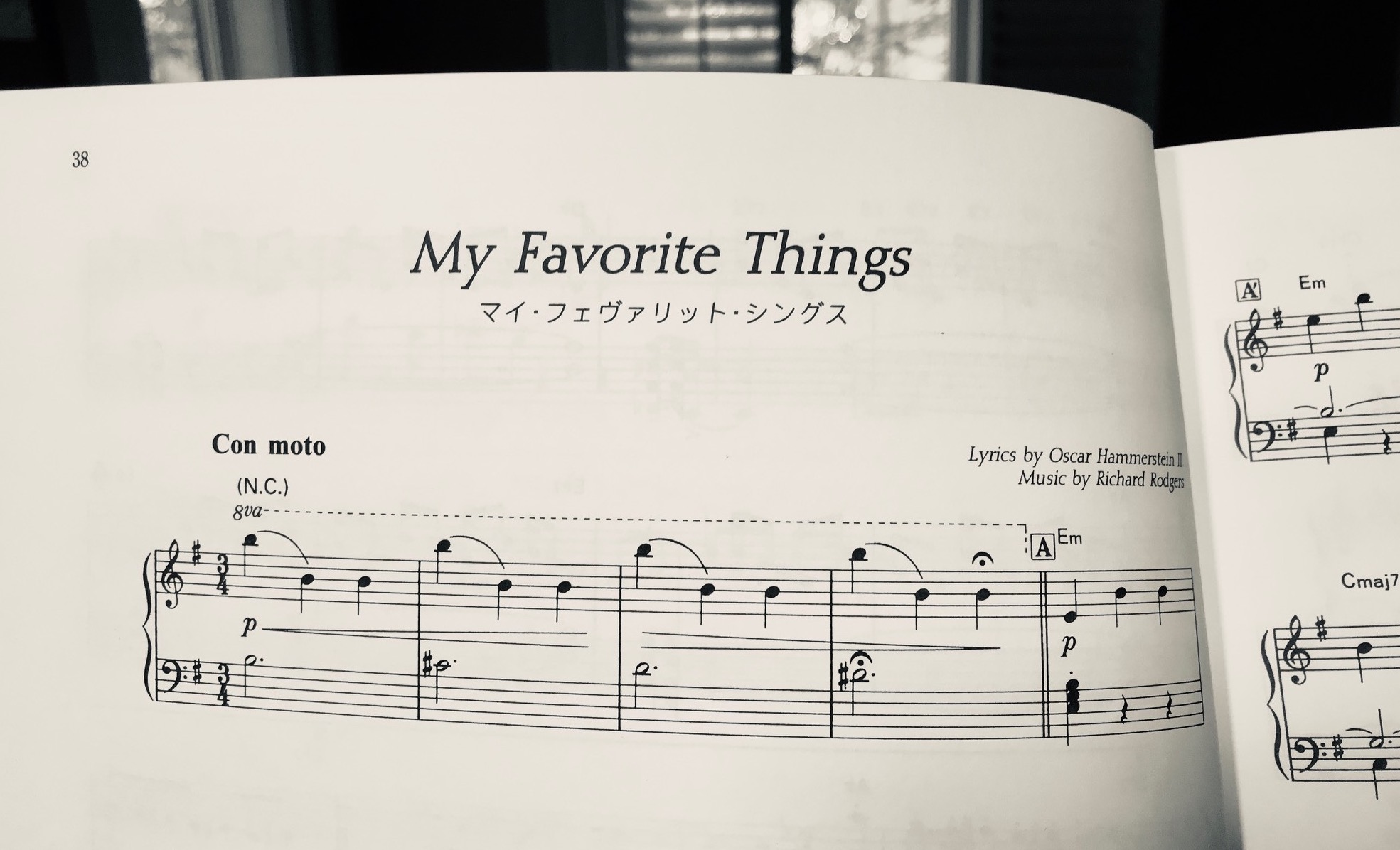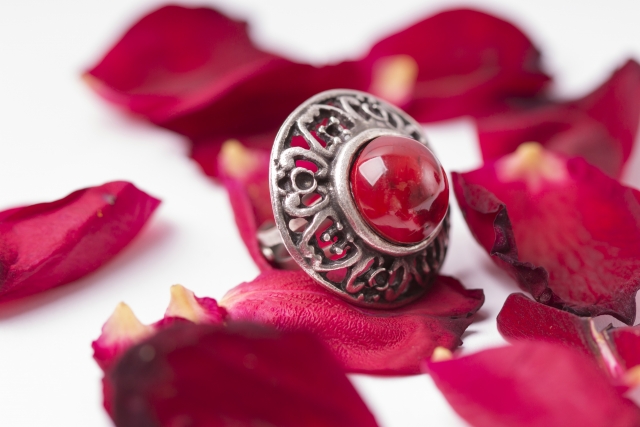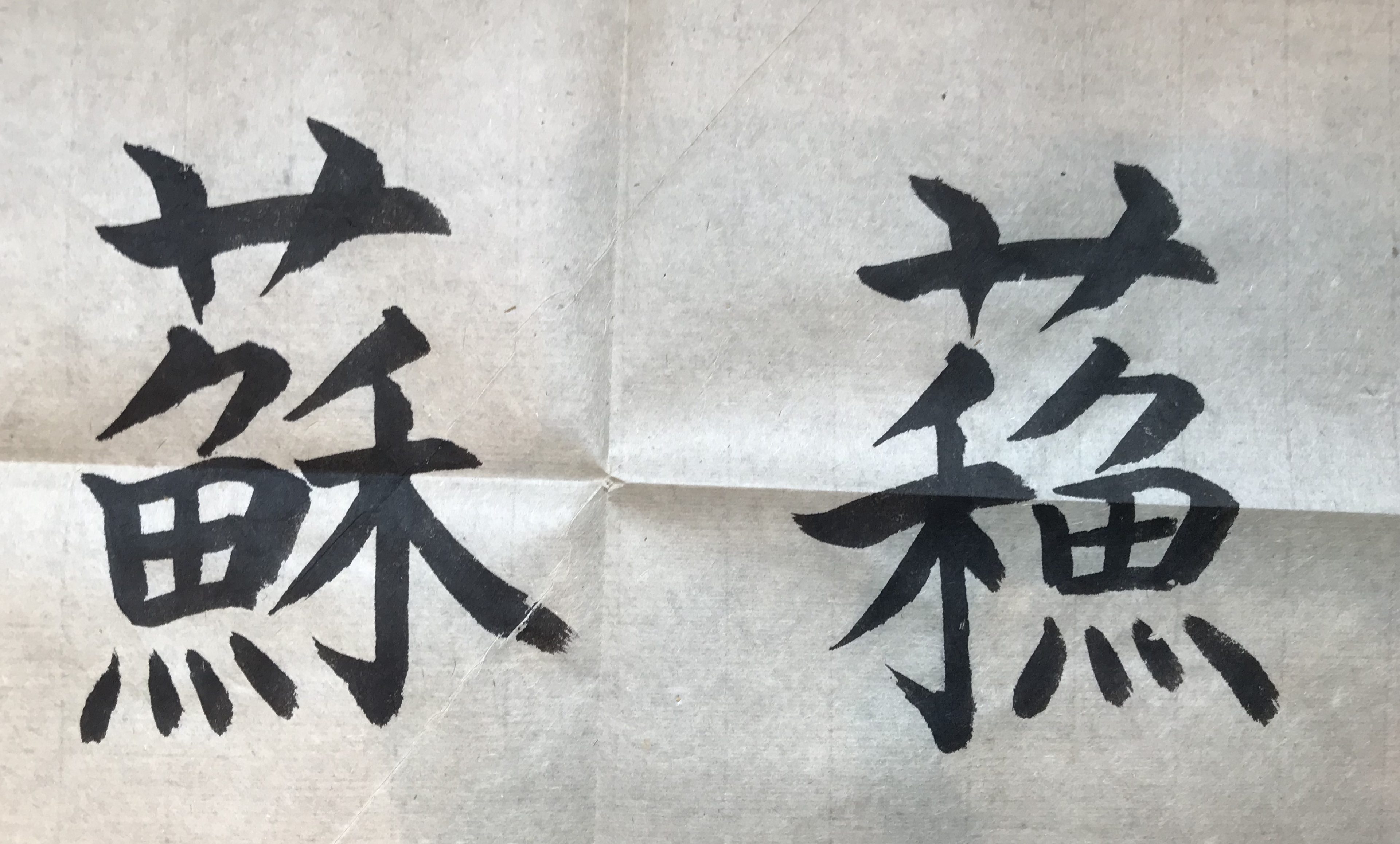ルビつき和訳は英文の下にございます。/ Japanese translation with furigana is below the English text.
THE CHARACTER LOOKING LIKE KATAKANA “KE”
Contents 1. The title of a movie 2. An anomalous kana character looking like the katakana “ke” 3. When you read it “ko” 4. When you read it “ka” 5. When you read it “ga” 6. They may say it even without the character 7. “Home Sweet Home” 8. The origin of the character looking like katakana “ke”
1. The title of a movie
Once, a student told us that he had seen an interesting movie titled “Isle of Dogs”.
The story of the animation film takes place in Japan in the near future. It is an American movie and is made in English, but he heard a lot of Japanese for effect.
We checked its Japanese title together. It appeared as “犬ヶ島”.
“Oh, it’s ‘Inu-ga-Shima’ in Japanese. You know the first Chinese character, dog, and the third one means island.”
I said. He asked,
“What’s this katakana ‘ke (ケ)’ in between?”
“Well, this is katakana “ke”, but it is a special character. You read it “ga”. It has the same function as “no” in today’s Japanese. So “Inu-ga-shima” means “Dogs’ Island”.
He didn’t seem to understand. I thought to myself I was too quick in giving various information, and it was not well organized. I promised him that I would present a better explanation the next time. It’s delayed, but hence this post.
If you would like to read the shortest answer to the student’s question, please read sections 2 and 5.
2. An anomalous kana looking like the katakana “ke”
The katakana character “ケ” expresses the “ke” sound as in a boy’s name “ケン (Ken)”.
Apart from it, there is another character in Japanese which by coincidence takes the same shape as the katakana “ケ”. Often it is written “ヶ”, smaller than regular kana.
As for its pronunciation, it’s counterintuitive, but we don’t read it “ke”. It’s “ko”, “ka” or “ga” depending on the context. In other words, the character looking like katakana “ケ” has three pronunciations.
Like hiragana and katakana, it is a character made from a Chinese character. It belongs to a group of historic characters now called anomalous kana (“hentai gana” in Japanese).”
They used dozens of anomalous kana characters in the past, but since the Meiji era, the Japanese government has pushed them out of official use and the education system. As a result, few people use them now. However, the character looking like katakana “ケ” is an exception; we see it in everyday life.
This character doesn’t have a name. So, if you would like to talk about the character looking like katakana “ケ”, mention “‘ke’ of ‘ikkagetsu’ (meaning the character “ケ” seen in the word “one month”) for convenience, and people will understand.
By the way, if you want to type the small “ヶ” character on your computer, type “ikkagetsu” in the Japanese Input Mode and hit the space bar a couple of times. Several candidates will show up and “一ヶ月” will be among them.
In the following sections, we will explain how we use it with its three pronunciations.
3. When you read it “ko”
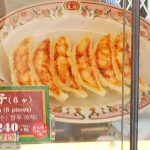
First, if you see “5ヶ 300円” on a price tag, read it “go-ko san-byaku en”. It means five pieces for three hundred yen.
Rule No. 1 to read the character looking like katakana “ケ” is as follows:
Read it “ko” if you see the number of the item sold together is followed by this character “ヶ”, and the price.
Formally, we write the Chinese character “個 (ko)” for this “ko”. It means piece, and we use it as a unit for counting things such as small dumplings and apples. We count them as follows:
1個 (pronounced ikko meaning one piece), 2個 (ni-ko), 3個 (san-ko), 4個 (yon-ko), 5個 (go-ko), 6個 (rokko), 7個 (nana-ko), 8個 (hakko or hachi-ko), 9個 (kyuu-ko), 10個 (jukko), etc.
However, the special character “ヶ (pronounced ‘ko’ in this context)” often replaces “個” as shorthand. So you will see:
1ヶ, 2ヶ, 3ヶ, 4ヶ, 5ヶ, 6ヶ, 7ヶ, 8ヶ, 9ヶ, 10ヶ, etc.
…very often on price tags at stores and in menus at restaurants in Japan. Naturally, the pronunciation and the meaning are the same as in the case with “個 (ko)”.
4.When you read it “ka”
The second pronunciation is “ka”. For example, if you see “3ヶ月”, read it “san-ka-getsu”. It means three months. The Chinese character “月” means the moon, and we use it as a unit to count months.
Rule No. 2 to read the character looking like katakana “ケ” is:
Read it “ka” if you find it between a number and a unit.
Below are a couple of examples:
- 1ヶ月 (Pronounced “ik-ka-getsu”. As afore-mentioned, “月” is the unit for months, so this means one month)
- 12ヶ国 (Pronounced “juu-ni-ka-koku”, it means 12 countries. “国” is the unit for counting countries.)
- 20ヶ所 (Pronounced “ni-juk-ka-sho”, it means 20 locations. “所” is the unit for locations.)
Formally, they spell these words “1箇月 (ik-ka-getsu)”, “12箇国 (juu-ni-ka-getsu)”, and “20箇所 (ni-ju-ka-sho)”, respectively. Today, the character “ヶ (pronounced “ka” in this context)” very often replaces the character “箇 (ka)” as a shorthand.
This “ka (whether spelled “箇” or “ヶ”)” has no specific meaning except that it has something to do with counting. However, never forget this “ka”, particularly when you count months. “1ヶ月(ik-ka-getsu)” means one month but “1月 (ichi-gatsu)”, January.
5.When you read it “ga”
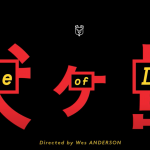
The third pronunciation is “ga”. When we saw “犬ヶ島” in the trailer of “Isle of Dogs”, we recognized the Chinese character “島 (pronounced “shima”, island)”, and read it “Inu-ga-shima” accordingly.
Rule No. 3 to read the character looking like katakana “ケ” is:
Read it “ga” if a word indicating a place follows it.
Note this “ヶ” (pronounced “ga” in this context) has a special meaning. “Ga” is an old particle for the possessive. It also makes a noun modifier by following another noun.
Below are some famous place names containing this “ga” before a place word.
- 関ヶ原 (Pronounced “Seki-ga-hara”. “Seki” means a gate and “hara” a field. As a whole it means something like “Field with Gate”)
- 鬼ヶ島 (Likewise, “Oni-ga-shima”. “Oni” means demons and “shima”an island, therefore “Demon’s Island”)
- 八ヶ岳 (“Yatsu-ga-take”. “Yatsu” means eight items, and “take” mountains, therefore “Eight-Peak Mountains”)
- 霞ヶ関 (“Kasumi-ga-seki”. “Kasumi” means “spring fog” and “seki” a gate, therefore it means something like “Gate of Fog”)
- 嵐が丘 (“Arashi-ga-oka”. “Arashi” means storm and “oka” hill, it is the translated title of Emily Bronte’s novel “Wuthering Heights”)
6.They may say it even without the character
Sometimes people pronounce a place name with “ga” even if there is no character for “ga” in the word. Popular examples are:
- 種子島 (Tane-ga-Shima; “tane” means seeds and “shima” an island, therefore it means “Island of Seeds”)
- 市谷 (Ichi-ga-ya; “ichi” means a market and “ya” a valley, so it can mean “Valley of Market”)
Despite the absence of “ga”, everyone in that area knows that they should call the place name with “ga”. That knowledge has been handed down for centuries, and some names existed long before Chinese characters came into the Japanese language.
It’s not only about the particle “ga” and “ヶ”, but also many old place names whose Chinese characters are pronounced in varied and unusual ways. Even the Japanese often must learn from the locals how to pronounce some names of places, train stations and bus stops when they travel.
7. “Home Sweet Home”
By the way, are there any words in today’s Japanese, other than place names, with the old noun modifier particle “ga”?
Yes, for one, people still use “waga” often. “Wa” means “I” in the old Japanese, so “wa-ga” means “my”. Compared to “watashi no (a more common expression for “my” today)”, “waga” is more often used in formal speech and in writing. Also, it modifies what you feel proud of. For example:
- Waga-kuni (Meaning “my country”, spoken by politicians and such)
- Waga-ko (“My beloved child”, written style)
- Waga-mama (“Selfish[ness]”; “mama” means “with the original state unchanged”, therefore your original desire is not curbed by anything if you are “wagamama”)
- “Waga-hai wa Neko de Aru” (“I Am A Cat”; It is the title of a novel written by Natsume Soseki. “Waga-hai” is a little old word, and it means “I” spoken by a man with a pompous and arrogant attitude. Since it’s a story told by a cat, you can tell it’s going to be a humorous novel.)
- Tanoshiki waga-ya (“Home Sweet Home”, “tanoshiki” is an old way of saying “tanoshii” or happy, and “ya” means a house)
8. The origins of the character looking like katakana “ke”
Some say the character looking like “ケ” was created in the following circumstances:
As we discussed earlier, the unit for counting pieces is “個 (ko)”. And its old variant is “箇 (ka/ko)”. A variant character means it has the identical meaning as the other.
Because of this, people took a part of the character “箇 (ka/ko)”, and used it as shorthand for “個 (ko)” and “箇 (ka/ko)”. On the top left of “箇 (ka/ko)”, you see a shape like the katakana “ケ(ke)”? This is it.
This may explain why the character like katakana “ケ” appears in counting, but we still haven’t found a satisfactory explanation on why we use it to express the possessive particle “ga”.
According to our Chinese character dictionary, “ヶ (pronounced ko/ka/ga depending on the context)” is also a simplified form of a Chinese character “个”. And “个” is a simplified form of “介 (kai)” and “箇 (ka/ko)”. One of the meanings of “介” is go between two parties.
Here is our theory, although rather a wild imagination. Many years ago, some people in what is Japan today began to apply Chinese characters to the original place names. They wanted a character to represent the possessive particle, “ga”, too. Eventually, they decided to use “ヶ” or “个” as shorthand for “介 (kai)” because it has a meaning as a connector, like the particle itself.
We will keep studying on this matter.
[End of the English post]
ケの形の字
目次 1. ある映画の題名 2. 「ケ」の形をした変体がな 3. 「こ」と読むとき 4. 「か」と読むとき 5. 「が」と読むとき 6. その字がなくても「が」を言うことがある 7. 楽しきわが家 8.「ケの形をした字」の由来
1.ある映画の題名
ある時、生徒さんが、おもしろかった映画の話をしてくれました。Isle of Dogsというタイトルです。
近未来の日本を舞台にした、米国のアニメーション映画です。話は英語で進みますが、効果のために日本語がたくさん使われていると。
日本語の題名を一緒に調べると、『犬ヶ島』と出てきました。
「ああ、『犬ヶ島』っていうんですね。最初の漢字は犬でしょ、そして最後のは島だから」
と私が言うと、その生徒さんが、質問しました。
「この真ん中のかたかなの『ケ』は何ですか?」
「えーと、この字はかたかなのケなんだけど、特別の字で、『が』って読むんです。今の助詞の『の』と同じ意味があるんですよ。ですから、『犬ヶ島』は、犬の島っていう意味です」
相手は腑に落ちない様子でした。いろんなことをごちゃごちゃ言っちゃって、これではわからないだろうと、自分でも思いました。それで、次回この「ヶ」について整理すると約束しました。遅れましたが、それがこの投稿です。
生徒さんの質問に最短で答えを得たい方は、以下のうち2節と5節をお読みください。
2.「ケ」の形をした変体がな
かたかなの「ケ」は、「僕の名前はケンです」のように、「け」の音を表します。
ところが、日本語にはもうひとつ別の字で、「ケ」と同じ形をした字があります。しばしば「ヶ」のように小さく書かれます。
読み方ですが、面白いことに、この字は「け」と読みません。言葉によって「こ」または「か」または「が」と読みます。三つ読み方があるのです。
この字はひらがなやかたかなのように漢字から生まれた字ですが、「変体がな」というグループに属しています。
昔、変体がなは何十もありましたが、明治時代以降公用語や教育現場から消えていきました。そのため、変体がなを使う人は少なくなっています。でも、この「ケ」の形の字は例外で、今でも日常生活で使われています。
この字には名前がありません。この字について他の人と話したいときは、便宜上「1ヶ月のケ」というと分かりやすいと思います。
なお、コンピューターで小さい「ヶ」を出したいときは、日本語入力モードでikkagetsuと打って漢字変換してください。表記候補の中に「1ヶ月」が出てきます。
それでは、次の節から、この「ケ」の形の字の三つの読み方についてお話しします。
3 .「こ」と読むとき
まず、値札で、「5ヶ¥300」と書いてあったら、「ごこさんびゃくえん」と読んでください。「5個三百円」の意味です。
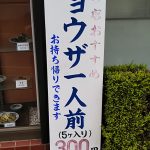
「ケ」の形の字の読み方ルールその1。いくつかまとめて売っているものの個数の後に「ケ」の形の字と、値段が書いてあったら、その「ケ」は「こ」と読む。
正式には、この「こ」は「個」と書きます。一つ一つのものという意味で、餃子やリンゴを数えるときの単位になっています。つまり、数える時はこうなります。
「一個、二個、三個、四個、五個、六個、七個、八個、九個、十個……」
この「個」の略字としてよく「ヶ」が使われるのです。皆さんが日本に行かれたら、スーパーや八百屋さんの値札、食堂のメニューなどに
「1ヶ、2ヶ、3ヶ、4ヶ、5ヶ、6ヶ、7ヶ、8ヶ、9ヶ、10ヶ……」
を見かけますよ。もちろん、読み方や意味は「個」と同じです。
4.「か」と読むとき
次の読み方は「か」です。
例えば、「3ヶ月」と書いてあったら、「さんかげつ」と読んでください。「月」は、カレンダー上の月を数える単位です。
「ケ」の形の字の読み方ルールその2。「ケ」の形の字が数字と単位の間にあったら、その字は「か」と読む。例えば、
- 一ヶ月 (「いっかげつ」と読む。「月」はカレンダー上の月を数える単位)
- 12ヶ国 (「じゅうにかこく」と読む。「国」は国を数える単位)
- 20ヶ所 (「にじゅっかしょ」と読む。「所」は場所を数える単位)
正式には、「1箇月」「12箇国」「20箇所」などと書きますが、今は「箇」の略字として「ケ」の形の字がとてもよく使われています。
この「か」には「数に関係すること」という以外、特別な意味はありません。しかし、少なくとも月を数える時は忘れないよう、気をつけてください。忘れると1ヶ月が1月になってしまいます。
5.「が」と読むとき
三番目の読み方は「が」です。
最初にお話しした『Isle of Dogs』の予告編を見た時、私たちは『犬ヶ島』の「島」という漢字に気が付いて、「いぬがしま」と読みました。
「ケ」の形の字の読み方ルールその3。「ケ」の形の字は、場所を表す言葉の前にあったら「が」と読む。
そして、この「が」には特別の意味があります。昔の日本語では、「が」は所有を示す助詞ですが、名詞修飾を作ることもできたからです。
以下に、「が」を含む有名な地名を挙げます。
- 関ヶ原(関所がある原、のような意味になる)
- 鬼ヶ島(鬼がいる島)
- 八ヶ岳(八つの山頂がある連峰)
- 霞ヶ関(霞の関所、のような意味)
- 嵐ヶ丘(エミリー・ブロンテの小説『Wuthering Heights』の訳語)
6.「ケ」の字がなくても「が」を言うことがある
なお、前節でお話しした名詞修飾の「が」が文字に現れないこともあります。例えば、有名な地名で、
- 種子島(種の島、のような意味)
- 市谷(市場のある谷、のような意味)
があります。「が」を書かなくても「たねがしま」「いちがや」と呼ぶということを皆が知っていて、昔から言い継いできたのです。地名には、漢字が日本語に入ってくるずっと前から存在していたものもあります。
「が」「ヶ」に限らず、とても変わった言葉、由来を知らなければ決して読めない漢字の読み方をする地名は多い。日本人でも、土地の人に聞かなければ旅行先で地名や駅名、バス停の読み方がわからないことはよくあります。
7.楽しきわが家
ところで、地名の他に、現代の日本語で所有を表す「が」を使った言葉はあるでしょうか?
はい。例えば、「わが」はとてもよく使われます。「わ」は古い言葉で「私」「自分」のことですから、「わが」は「私の」という意味になります。普通の「私の」に比べて、「わが」は、正式な場で話す時や、書き言葉でよく使います。そして、話し手が誇らしく思っている事物や人に付きます。
- 我が国(私の生まれた国、政治家などが使う)
- 我が子(私の大事な子供、文語的)
- わがまま(「まま」は「元の状態を変えないこと」という意味なので、自分の元来の欲求・願望を抑えないこと)
- 吾輩は猫である(夏目漱石の小説。「わがはい」は少し古い言葉。男性が尊大な様子で自分を指す感じ。猫が語る物語なので、ユーモラスな小説だとわかる)
- 楽しき我が家(「楽しき」は「楽しい」の古い言い方、「や」は家)
8.「ケ」の形をした字の由来
なお、どうして「ケ」の形の字ができたのでしょうか。これについて、主な説は以下のようなものです。
「一個、二個……」と数える時の「個 」という漢字は、「箇(文脈によって「か」「こ」と読みますが、ここでは「か」とします)」の異体字です。異体字とは、「個」と「箇」は姿は違うけれども意味が同じだということです。
そのため、人々は漢字「箇」の一部を採って、「個 」や「箇」の略字として使いました。「箇」の字の一番上の左の部分を見てください。かたかなのケに似た形がありますね? これがそうなのです。
この説明によって、ケの形の字がなぜ、数えることに使われているかはわかるような気がします。が、なぜ所有を表す「が」にも使われているのかはよくわかりません。
手元の漢字辞典によれば、「ケ」の形の字は漢字「个」を略したものとも言われています。そして「个」は何かといえば、「介」と「箇」の略字です。
「介」の字には二者の間の仲立ちをするという意味があります。
そこで、私たちの仮説です。大胆なものではありますが。大昔、現在日本と呼ばれる場所に住んでいた人たちが地名に漢字を当て始めたころの話。
この人たちは地名によくある所有の助詞「が」にも漢字を当てたいと思いました。いろいろ考えた結果、「が」のようにつなぎの意味を持つ字として、「介」の略字である「ヶ」や「个」を使うことにしたのではないのでしょうか。
今後もこのことについては勉強を続けていきたいと思います。
[和文終わり]


